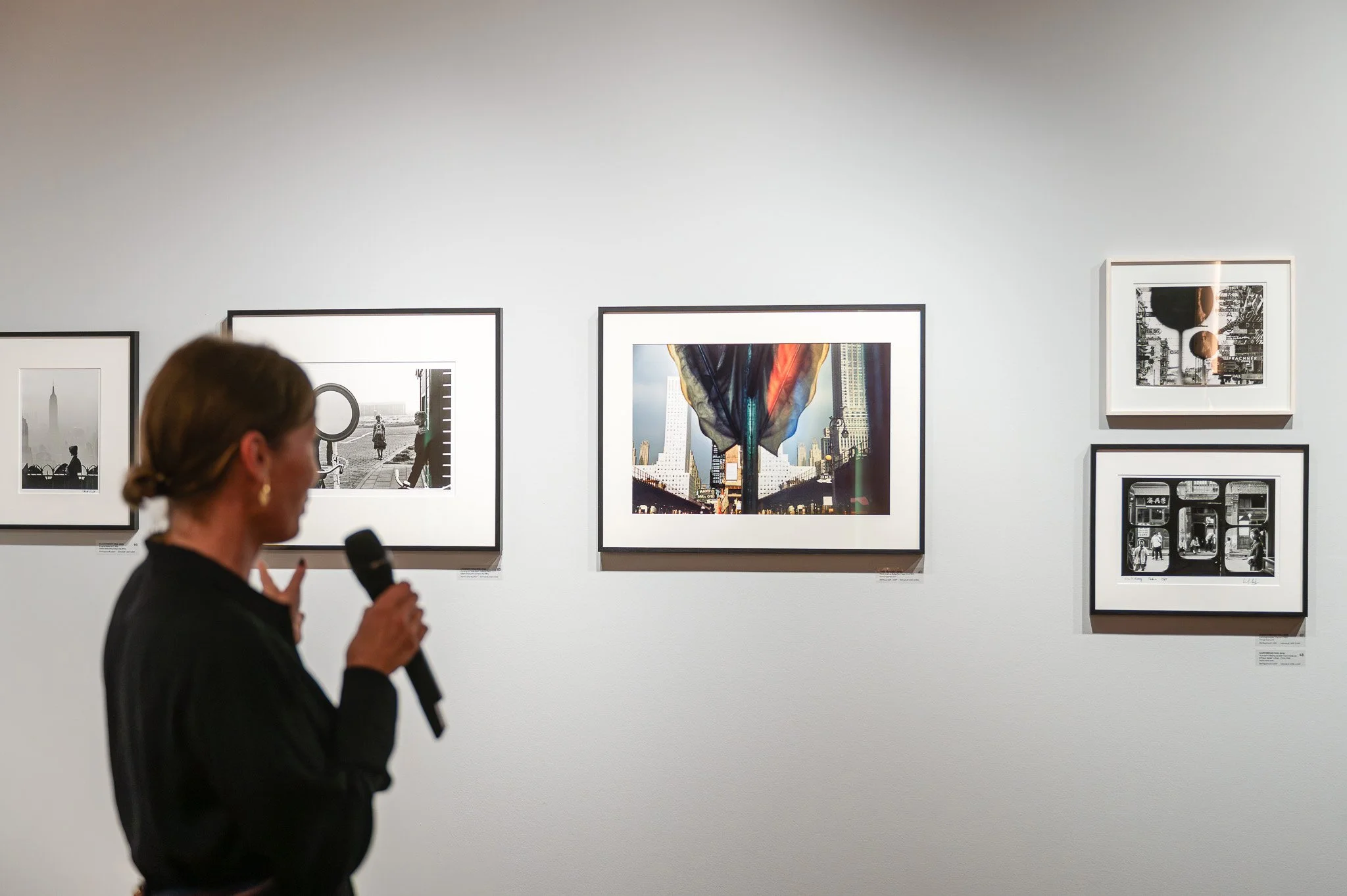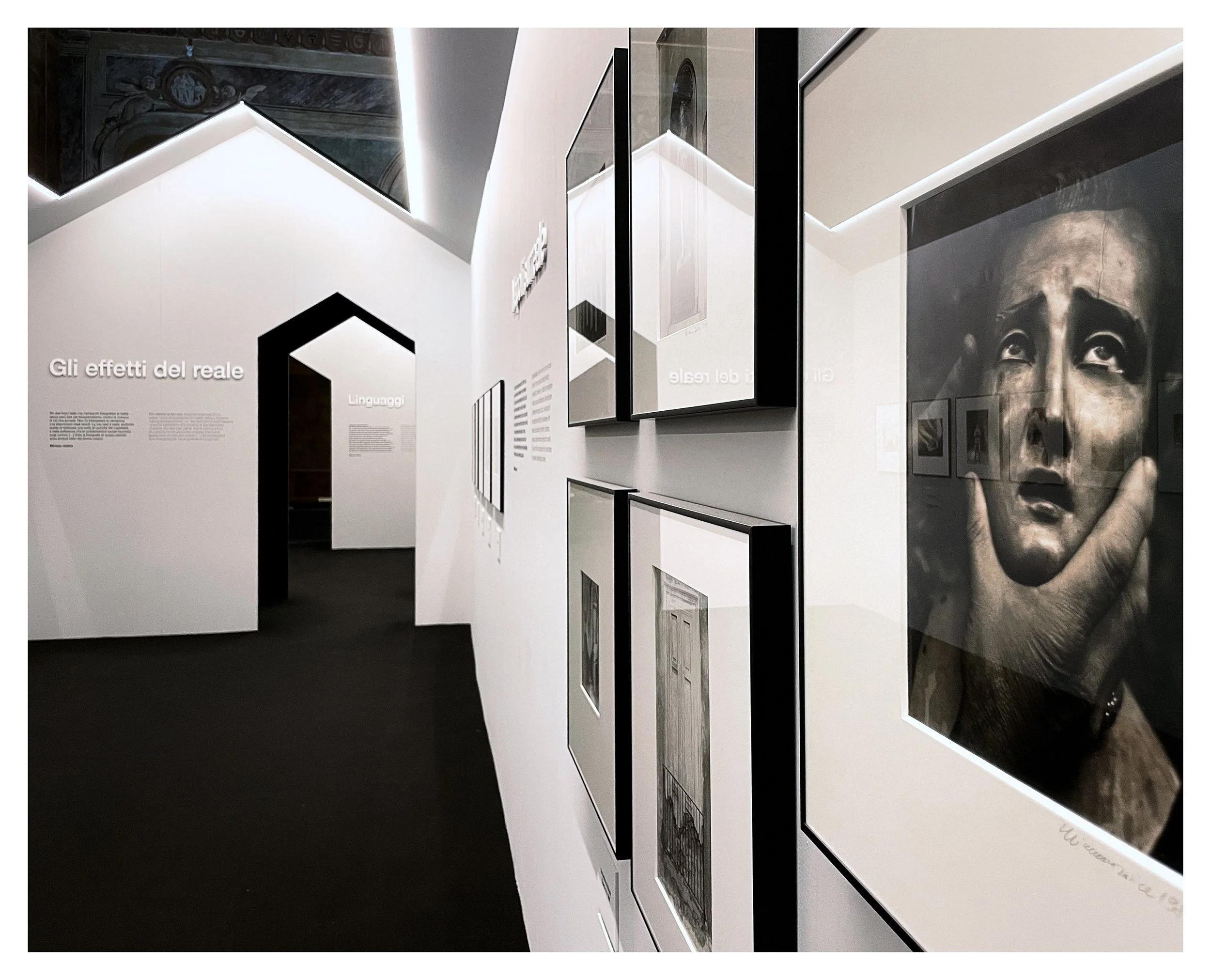Catch “Motion” While You Can - A Limited-Time Exhibition by Leica
In the centenary year of the Leica I, the groundbreaking camera that a hundred years ago made it possible to capture the world in motion - the Vienna-based Leitz Photographica Auction celebrates photography as a medium of transformation. Under the theme “Motion,” the upcoming auction brings together works that reflect the dynamic shifts in society and aesthetics, featuring outstanding photographs from the 20th and 21st centuries to be auctioned on October 30 at the Leica Gallery Vienna. The exhibition “Motion,” showcasing the highlights, will be open to the public free of charge from October 17. I highly recommend looking at the photos that are going to be auctioneered at October 30.
Exhibition view “Motion”, Leica Gallery October 2025
Besides the “headliner”, a vintage print by Edward Weston (see below) you can add photos by Henri Cartier‑Bresson, August Sander, Otto Steinert, Ansel Adams, Walker Evans, Berenice Abbott, August Sander, Brassaï und Horst P. Horst., Ernst Haas, Garry Winogrand, Joel Meyerowitz, Helmut Newton, and contemporary voices like Nan Goldin, Sissi Farassat and Hiroshi Sugimoto to your collection.
When the Leica I, the world’s first serially produced 35mm camera, was introduced in 1925, it revolutionized photography - compact, portable, and always ready, it replaced the static bulk of large-format cameras with a new sense of immediacy and movement, ushering in a new era of photographic expression that evolved over the years to come.
Exhibition view “Motion”, Leica Gallery October 2025
What Collectors Should Know: Why Prints Matter More Than Negatives
When building or advising a collection, one crucial - and perhaps counterintuitive - principle applies: negatives are generally irrelevant in the fine art photography market. What really commands value are vintage prints - that is, prints made by the artist (or under their supervision) close to the moment when the photograph was created.
What are vintage prints?
The term vintage print is defined as a print made soon after the exposure of the negative, by the photographer or under their supervision, using approved materials.
Later prints (even from the same negative) are typically valued significantly less. As one commentary puts it: “In general, a vintage print is considered to be more valuable than a later or modern print of the same image…”
Importantly: the negative itself does not typically drive value. As one note argues: “There is no limit to the number of copies that can be made from an original negative … the photographer is mortal and time is short.”
For the collector, proof of vintage status + provenance + condition of the print matter far more than ownership of the film or negative. Market analyses show that images with early prints sell for multiples above the same image’s later print.
In short: If you’re acquiring photographic art for investment or heritage, your focus should be authentic vintage prints - ideally signed or annotated, with clear provenance - rather than just negatives or unseen archival material.
Some Notable Lots (my personal opinion)
EDWARD WESTON - Nude Study (Anita), Mexico 1925 (Lot 37)
A rare vintage Print with a starting price of 110.000€ (expected to go up to 200k-250k). It was created during a session with Anita Brenner and marked a radical new way of Westons photography. The print is a contact print made from the original 8×10-inch negative (enlarger were not invented yet), produced on fine-grain chloro-bromide paper.
Exhibition view “Motion”, Leica Gallery October 2025
HELMUT NEWTON - Jenny in my studio, Paris 1978* (Lot 93)
For me, the most beautiful part of this image is not the female body but the grain in the lower, right corner and its gradient. Just look at the vintage silver print closely - its amazing!
Helmut Newton, Jenny in my Studio (a crop of the right, lower corner of the image) - Exhibition “Motion”, Leica Gallery, October 2025
ERNST HAAS - Third Avenue Reflection, New York 1952* (Lot 41)
Although it is signed, titled, dated and numbered and stamped by the Ernst Haas Estate, Edition #3/25, it is an Archival pigment print which basically means a high quality modern print with ink. This is also the reason why it is moderately priced with 2.500€ for the starting price. See the color image below.
MARC RIBOUD (1923–2016) - ‘A street in Beijing as seen from inside an antique dealer's shop’, China 1965 *(Lot 48)
More about this French photographer can be seen at the current exhibition MARC RIBOUD. Forty Years Around The World at Forum am Schillerplatz / KLV Art Projects which is part of FOTO WIEN until Nov 2nd 2025. See the image in the right lower corner below.
Exhibition view “Motion”, Leica Gallery October 2025
Checklist for the Interested Collector
When you zoom in on particular lots, here are key questions to ask:
Print date: Was the print made at or very soon after the negative’s exposure?
Print provenance: Was it created by the photographer or studio, or under authoritative supervision? Are there stamps, inscriptions, collector history?
Edition/uniqueness: Is this print part of a numbered limited edition? Or an early unique print?
Paper & condition: What type of paper was used, is there toning, discoloration, damage, condition issues?
Exhibition/publication history: Has this print been exhibited or published? Does that add to its provenance?
Negative vs print ownership: Does owning the negative add value in this case - often it does not. Focus on the print.
Brand/context tie-in: In this instance, the Leica centennial adds a layer of relevance; prints linked to Leica’s story may carry added cachet.
A Personal Remark
Most importantly, I suggest to buy/collect photos, that you personally enjoy to look at. Unless it is clearly an investment, go for your stomach feeling and enlarge your collection with pieces you actually love.
During a guided Tour led by independent Expert Johannes Faber he suggest the following exercises when going to an exhibition: chose one artwork from that exhibition and only one and think about why you would chose it (obviously ignore facts like price etc…). This sharpens your mind on what you personally want to collect and why.
For me this were the three photos by HIROSHI SUGIMOTO which are Offset lithographs.
Exhibition: “Motion” Opening:
October 16, 2025 | 6:30 PM
Leica Gallery Vienna
Seilergasse 14, 1010 Vienna
Exhibition Dates:
October 17 – 30, 2025
Auction: “Motion”
Thursday, October 30, 2025 | 6:30 PM
Leica Gallery Vienna
Seilergasse 14, 1010 Vienna
Post-Sale: Runs until November 23, 2025
Other interesting blogposts:


















